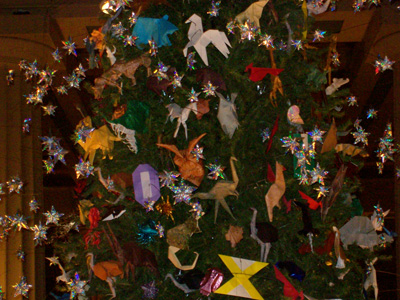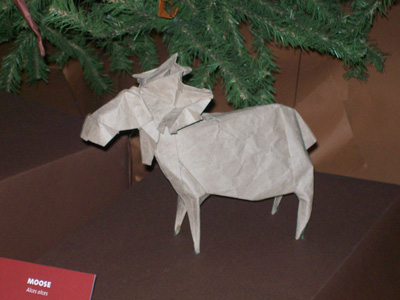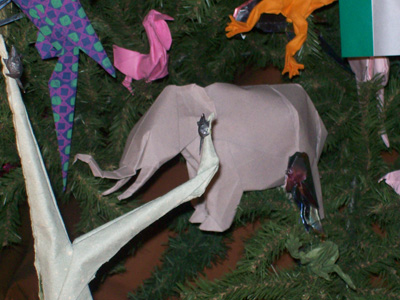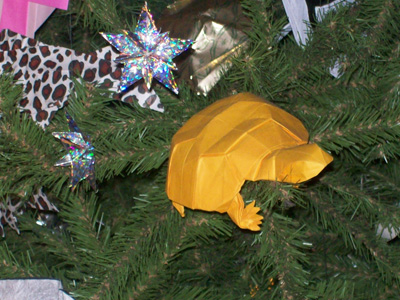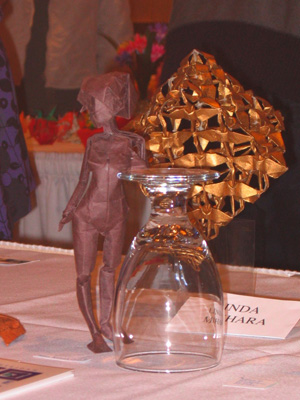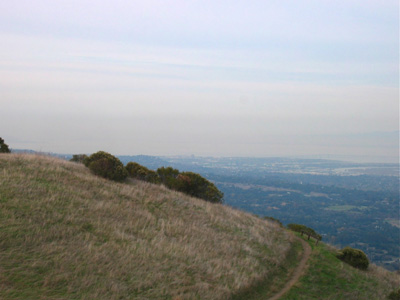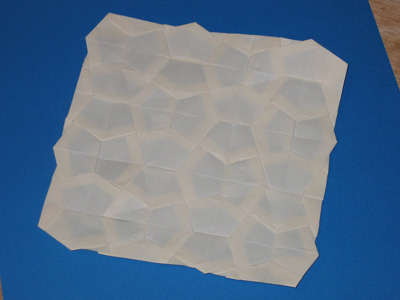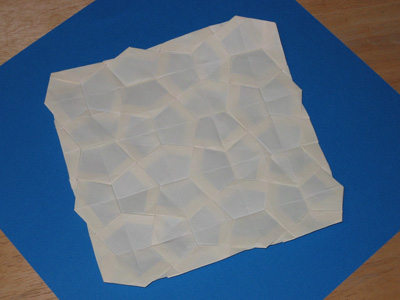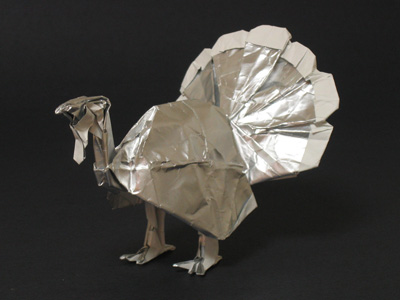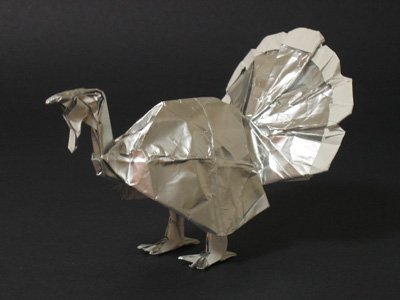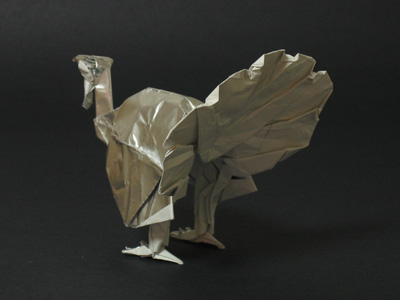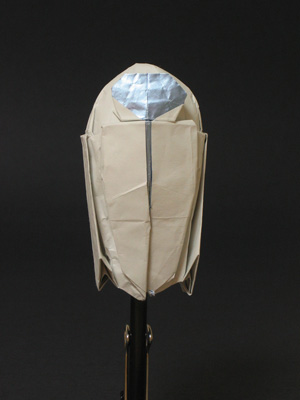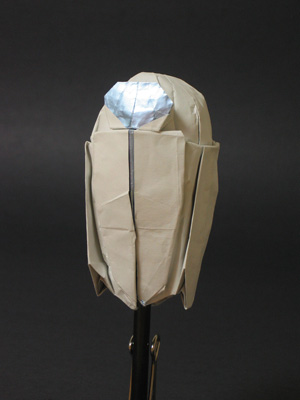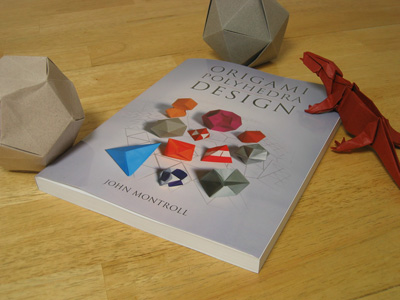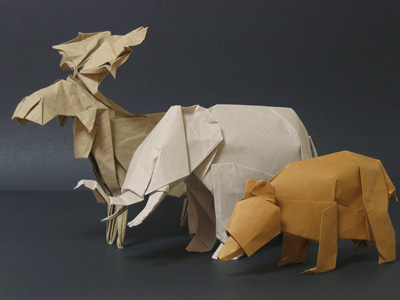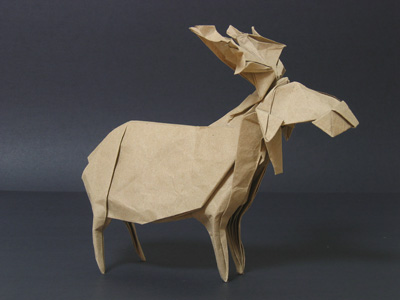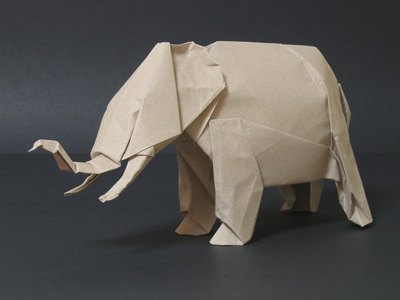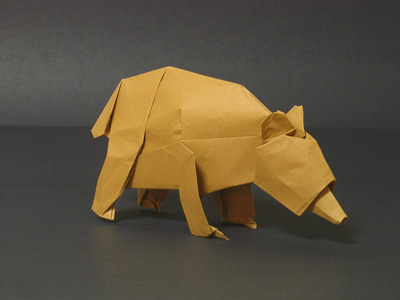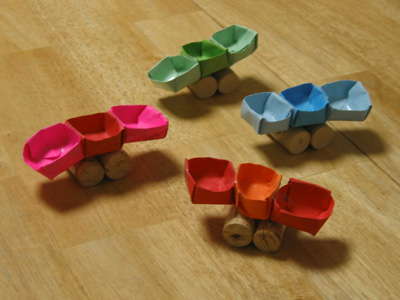I just got back from a great trip to San Francisco for the Pacific Coast Origami Conference. It was Jeannie’s idea for me to go, and I must say I was kind of ambivalent about the whole thing until I actually started the journey. But it was great and she deserves a big thanks. The conference went from Friday to Sunday and was a ton of fun. I lived in the Bay Area from the mid-90’s to the early 2000’s, but haven’t been back for a few years, so I also spent an extra day visiting old haunts and catching up with friends.
I must be getting older. Old people are famous for getting up early. It didn’t really bother me to have to get up at 4:30 to get to the airport in time. It felt like getting up for a normal day of work. A few random skipped meals didn’t bother me either, nor did the time zone change or lack of sleep. I cashed out the last of my frequent flier miles from the 90’s when I flew 100,000 miles a year and got an upgrade to business class. It was awesome! The seat was like a living room recliner chair. Since I’m well over 6 feet tall it made a big difference for me being able to nap on the plane.
I was flying alone and wanted everything to fit in my carry on including the models for my exhibit. For my exhibit I made a new batch of models from the designs I know well; sort of a greatest hits collection. These included my Elephant, Moose, Lizard, Turtle, Balloon, UFO, Luv Bug and Loon.
The Pacific Coast Origami Conference (PCOC) is smaller than the New York convention, but a bunch of friends showed up, including some NYC people like Jan and Tony, and the M.I.T. crowd including Brian, Jason, Aviv, Andrea and Tian, who are smart and geeky enough to be fun to hang out with, and others like Eric G, Jared, and Nathan. Brian makes lots of puns and Jason quotes Monty Python enthusiastically and inaccurately and sings contagiously. Andrea has moved to San Mateo and is working for Oracle and Aviv was out there for an interview. Nathan is done college and living in SF working as a school teacher. And so it goes.
I stayed at the hotel where the conference was, which made it pretty convenient. We had some really good Thai food in Japan Town after wandering around in an indecisive group looking for a place Robert Lang recommended, but knew neither the name or location. I bought some really nice origami paper and won a sheet of handmade origamido paper for participating in a folding challenge.
While I was there I folded (among other things) a new original model: an Eve robot to go with Brian’s Wall-E. I taught a class which was a hit. I’m working on a book and brought a whole stack of diagrams, hoping people would fold them and give me feedback. Everyone wanted to fold my Turtle since it was in the model menu, and so I taught that from memory while a few people folded from diagrams on the side.
I’d forgotten what a beautiful city SF is. So mellow and picturesque, especially compared to New York. Saturday morning I took an epic walk. I went from the hotel across town, down the crookedest block of Lombard Street, up to Coit Tower, and then down and around to the waterfront, Pier 39 and Fisherman’s Wharf. I had planned on riding the cable car back to the hotel, but when I got there the line was way too long and there was a bad guitarist playing guitar and singing badly to try and get tips from the people in queue. So I walked back up to the hotel.
Monday I rented a car and drove down 280 to Silicon Valley. I had lunch with my friend Wanda in Palo Alto. It was great to see her and catch up. It was a beautiful day and fun to see my old neighborhood. I went for a hike at a place called Windy Hill, which is just up at the top of the hills from there. The ride up is a crazy switchback road thru redwood forests. From the top you can look down and see Stanford, Moffett Field and the whole bay, and even San Francisco off in the distance. Turn around and you see the Pacific Ocean out over the hills to the west.
Ah, my heart is torn in two. I loved living there and love the land and the climate and the culture and people and everything about the place and would love to go back.
In other news, Lizzy got her cast off the day I left. She was born in California and fantasizes about going to college at Stanford as her destiny. I tell her get good grades. She’s with me in pining to move back. I suppose if the right opportunity comes up. But then there’s reality of there here and now.
The last thing the happened at work before I left was that I packed up my office. My whole project moved to a new floor. I flew the red eye overnight Monday and worked at home yesterday, so today I got in to see my new space. It’s much nicer than my old one. It’s a corner office with windows on three walls and a view of Hell’s Kitchen and Times Square. The movers didn’t take my chair (which was a nice one that I brought with me from Nick when I joined the platform group), and my colleagues told me the chairs all were gone and lost. But I went up there and another guy had appropriated it, and gave it back without me having to get too insistent. Another thing, my company just announced extra days off for everyone for the holidays, so it looks like I can take a good long xmas vacation this year.
Coming soon: pictures!
